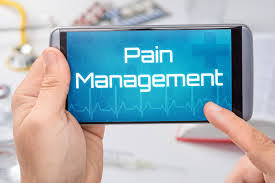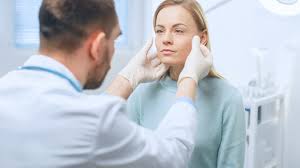Pain Management After Plastic Surgery
“Will it hurt?” This is without a doubt one of the most common questions cosmetic surgeons get asked. That’s because pain is simply a huge concern for many people. But like any cosmetic surgeon will tell you, the old adage ‘no pain no gain’ is extremely relevant in the world of cosmetic surgery more than in any other medical field. This should not worry you though because pain management techniques keep on improving each day. It is in fact, safe to say that for each cosmetic surgery procedure out there, there is always a pain management technique preferred that guarantees minimum pain. Read on to learn more about pain management and plastic surgery.
Pain Facts
The extent and degree of pain people feel after cosmetic procedures –non invasive, minimally invasive and surgical – depends on several factors. For example, you may not know it but gender plays a key role when it comes to pain management. Generally, males have been proven to have a lower pain threshold compared to females. Age is also a factor alongside other considerations such as the type of procedure you wish to undergo and use of anesthesia.

Effective Management
Effective pain management calls for extensive background checks to ensure the patient does not have an underlying medical condition. That is not all though. It also calls for medication to prevent nausea which is a common side effect of pain medication. Lastly, it includes guidance and advice on diet, what you should do and not do immediately after surgery and relevant suggestions on supportive accessories and garments.
Local or Regional Anesthesia
Regional anesthesia or large area local anesthesia aptly referred to as LALA are common in procedures like liposuction and eyelid surgery. LALA’s also come in under in biopsies that require tissue or skin samples as well as sex organ procedures. Local anesthesia can be delivered to the surgical site through a pain pump designed to release medication each time a button is pressed. The patient can then control intravenous infusion from the pain pump or it can simply be given as a continuous flow.
There are other benefits that come along with patient controlled pain pumps. They are primarily designed to decrease pain and reliance on medication. They also make it easy for surgeons to accurately administer anesthesia. A patient cannot overdose on patient controlled pain pumps because the amount of medication in the pump is always limited and monitored. It does not matter how many times the release button is pressed. The pump will only release what is necessary and enough.
Nerve Blocks
They are used to control pain that affects a limited area. They are mostly delivered through a small catheter around the incision area. They are ideal for pain management solely because they can control pain longer than a local pain injection can. Surgical procedures on legs and hands use nerve blocks. Facial surgical procedures and many dental treatments also use nerve blocks. Note that nerve blocks reduce the amount of narcotic substances required to control pain. That explains why they come along with minimal side effects.

Oral pain medications
During your recovery you may be prescribed pain medications to be taken by mouth. There is a wide variety of oral pain medication, including narcotic and non-narcotic pain relievers and non-steroidal anti-inflammatory drugs.
Most, but not all, oral pain medications should be taken every four hours to be effective. Before you are discharged, clarify this with your doctor. Follow your doctor’s instructions carefully and read the label on the medication. Some medications should be taken with food to help prevent nausea and vomiting, whereas other medications need to be taken on an empty stomach to assist their complete absorption.
Oral pain medications you may be given include:
- After surgery opioids (narcotics) – Including morphine, fentanyl and hydromorphine. There are many ways to take these strong pain relievers. Opioids may cause vomiting, nausea, drowsiness, itching and constipation. Taken as directed, your risk of addiction to them is very rare.
- Opioids to be taken at home – Including Endone, Panadeine Forte, Darvocet, and others. They too have many options to choose from and are effective in controlling moderate to severe pain. These may also cause nausea, vomiting, drowsiness, itching and constipation. These medications often contain paracetamol. Too much paracetamol can damage your liver, so make sure that you are not taking other medications that contain paracetamol. In addition, prescription medication can be addictive.
- Before you are given any pain medication, tell your doctor about oral medications you have been prescribed, what you are buying over-the-counter and whether you are taking any vitamins or supplements.
- Non-opioid (non-narcotic) pain relievers –These include Panadol among others. They can control mild to moderate pain. Because they have very few side effects, they are suitable for most patients, and using them properly reduces the need for stronger medications that may have serious side effects. If taken in excessive amounts, these pain relievers can contribute to liver damage, so follow directions carefully. People who already have liver problems and those who consume a lot of alcohol may face a higher level of risk when on these medications.
- Nonsteroidal anti-inflammatory drugs (NSAIDs) – Drugs such as Nurophen can relieve mild pain and reduce inflammation and swelling. Some are available as over-the-counter medicines, but check with your doctor before taking them. They can reduce the amount of narcotic pain meds you take, helping reduce unpleasant side effects. However, many people experience stomach upsets and dizziness while on nonsteroidal anti-inflammatories, and if you suffer from kidney problems, stomach ulcers or heart failure, do not take them without a doctor’s approval. Never exceed the recommended dose. Just because they can be purchased without a prescription doesn’t mean they can’t do you harm if abused.

What should I be taking for the pain?
In the first 48 hours after your surgery it’s best to take Paracetamol 500mg x 2 at breakfast, lunch, dinner and bed time. You will probably need stronger medication such as Endone, Panadeine Forte or Palexia for any breakthrough pain in between.
Keeping the pain under control will help you recover more quickly. Your posture will be better which helps to prevent other muscle aches and pain. You will be able to mobilise more freely which helps to prevent blood clots. Your blood pressure will not be as high which helps to minimise bruising.
Before you go home
A few points to remember before you go home following a surgical cosmetic procedure:
- If you have not been given pain medication, make sure to ask for a prescription in case you do feel pain later on.
- Fill the prescription before going home. You do not want to be in severe pain and have to wait for someone to fill the prescription for you.
- Get your surgeon’s phone numbers. If your pain becomes severe or you have an unusual reaction to the medication, contact your surgeon.
- Your recovery is a priority for your surgeon, just as it is for you. Severe pain can affect the positive outcome of the procedure and good pain management can speed up your recovery. Knowing this, your surgeon will make his or her best effort to prescribe the most effective combination of pain relieving treatments.